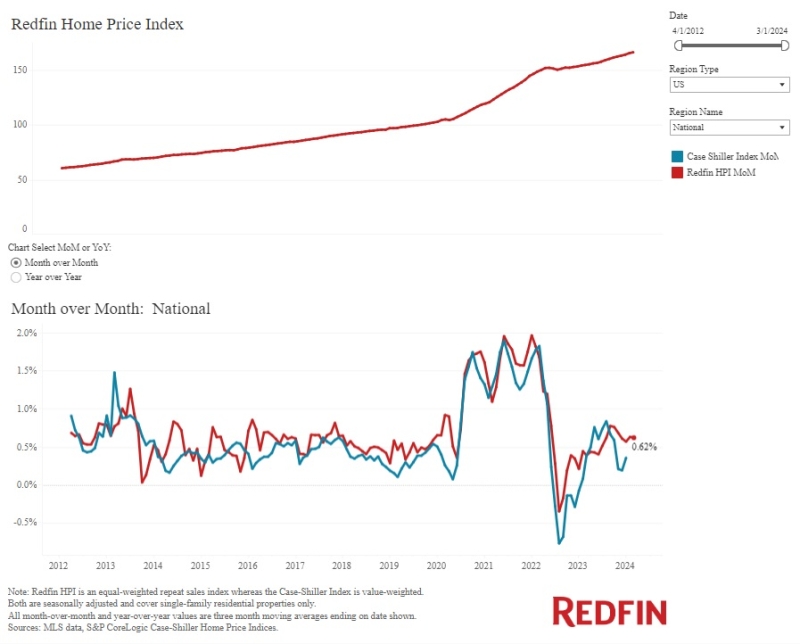Advertisement
Freddie Mac PMMS: Long-term mortgage rates rise this week, reversing 11-week trend
Selling mortgages is not rocket science: Expert says lenders and homeowners are better off not using FHA HOPE programDave HershmanHOPE for Homeowners, FHA, loan modification, reduction of principal
Is HOPE hopeless?
When lenders appeared before Congress on Sept. 17 and were less
than enthusiastic about utilizing the new Federal Housing Administration (FHA)
HOPE for Homeowners (H4H) program, I really thought that they were
grandstanding a bit and trying to put themselves in a position to
gain better terms for the program. The lenders made statements such
as the following ...
"For many investors, the program may not be viewed as an
attractive option, especially when our experience shows we can
achieve relatively low rates of re-default when we modify a loan
through a rate reduction that lowers the borrower's monthly payment
to an affordable level."
—Marguerite Sheehan, Senior Vice President, JPMorgan Chase
But on closer examination, the fact that lenders are willing to
go it alone without FHA is right on the mark. As a matter of fact,
I find that theH4H program is a bad deal for homeowners and lenders
when compared to a lender direct loan modification. Why is this the
case?
First, let's look at the lender's position in the H4H
transaction:
•The lender has to bring the principal down to 90 percent
of the current value of the home. Under a lender-direct
modification, the lender has no such obligation. There is no reason
that the reduction of principal needs to be less than 100 percent
of the current value of the home.
•Actually, considering the fact that the mortgage
insurance premium and closing costs of the new FHA loan are likely
to be included in the new loan amount, the reduction of principal
is more likely to be down to 85 percent of the current value.
•The new loan amount is limited to $550,440; therefore,
larger loan amounts are not able to be refinanced under this
program. Obviously, there is no such restriction with a lender
direct modification.
•The property must be the primary residence of the
homeowner and the homeowner must own only one property. Again,
there is no such restriction with a lender direct modification.
Now let's look at the position of a homeowner in the H4H
transaction. At first glance, it appears that the homeowner
achieves a good deal because the lender is forced to bring the
principal balance down to around 85 percent of the mortgage amount
under the program. However, there are several other considerations
that serve to mitigate these gains:
•Under the H4H program, because a new loan is originated,
the interest rate on the new loan is likely to be at market. Under
a direct lender loan modification, the homeowner may be able to
negotiate a below market rate. As an example, if the rate is
reduced from six percent to five percent, the payment will
represent a savings of almost four percent of the loan amount over
a five-year period.
•In addition to the option of offering a lower rate, the
FHA program also requires that the new loan be a 30-year,
fixed-rate. However, under a direct modification, the lender can
offer a 40-year, fixed-rate, and thus save the homeowner another
3.3 percent over a five-year period.
•On the new FHA loan, the homeowner is required to pay a
three percent upfront mortgage insurance premium, as well as a 1.5
percent monthly premium. That is a cost of more than 10 percent
over a five-year period! There is no insurance required for a
direct lender modification.
•In addition to the mortgage insurance premium, under the
FHA program, the homeowner will have to pay traditional closing
costs, which could be as much as three percent of the loan amount.
This can be financed out-of-pocket—through a higher interest
rate or by a further curtailment of principal by the lender. By
comparison, closing costs for direct lender modification are
minimal.
•To make matters even more restrictive for the homeowner,
a second mortgage cannot be placed on the new mortgage for the
five-year period after the FHA H4H loan is originated.
Here is the one fact that really could be the most important
drawback of the FHA program for homeowners: A great portion of
equity gained on the home in the future is shared with FHA.
Therefore, there is no upside to the lender and a reduced upside to
the homeowner. This shared equity starts at 100 percent to FHA
during the first year and will remain at a minimum of 50 percent to
FHA from five years until the duration of the mortgage. In other
words, if the homeowner holds a $300,000 home for 10 years and
there is a gain in value of 40 percent (this is approximately 3.5
percent per year, which would barely keep appreciation in line with
inflation), then FHA would have a payday of $60,000 and the
homeowner is a clear loser of another 20 percent of the value of
the overall transaction.
Bottom line, in percentage terms, the lender loses up to 15
percent upfront and what looks like a 15 percent gain to the
homeowner can easily turn into a loss of more than 30 percent to
the homeowner. I can't think of more of a "lose-lose"
situation.
There are obviously good reasons for the lender to focus on
modifying the loans themselves, rather than relying on the H4H
program. Costs are minimal and there is more flexibility in the
final terms as the interest rate, loan type, principal balance and
even the way the loan is reported on the credit report can all be
up for negotiation. With a direct lender loan modification, there
are typically no restrictions, such as sharing equity or placing a
second mortgage on the property in the future.
And I believe that it is the responsibility of a loan officer to
help direct his clients in the right way in this regard. The good
news is that many loan officers are originating loan modifications,
and it has turned into an income source as important as originating
a new loan.
If you would like more information about loan modifications so
that you can educate your clients and possibly add this as a
service, do not hesitate to e-mail me at [email protected] and
I will forward to you a slide presentation with an accompanying
audio seminar.
Dave Hershman is a top speaker and leading author in the
mortgage industry with seven books—including two best sellers
for the Mortgage Bankers Association
of America. He also delivers his targeted "Joint
Venture/In-House Loan Officer Training" for the industry. For more
information, call (800) 581-5678 or e-mail [email protected].
About the author





